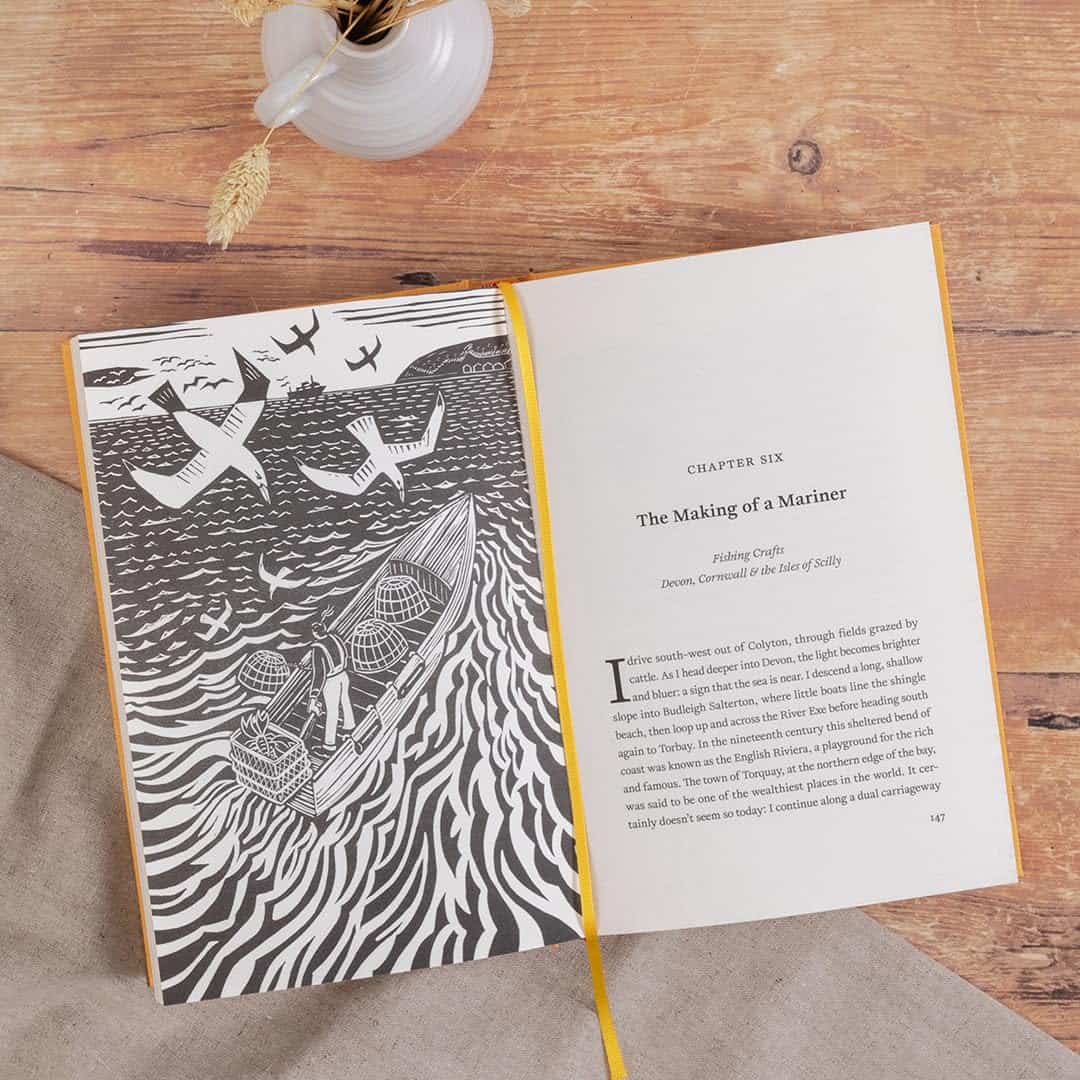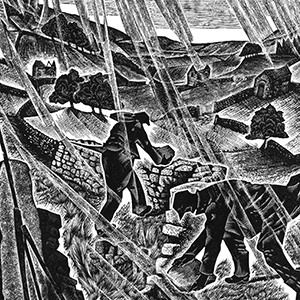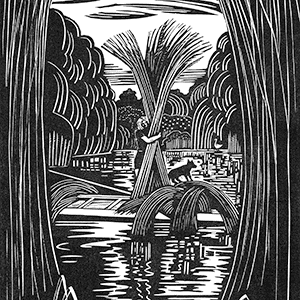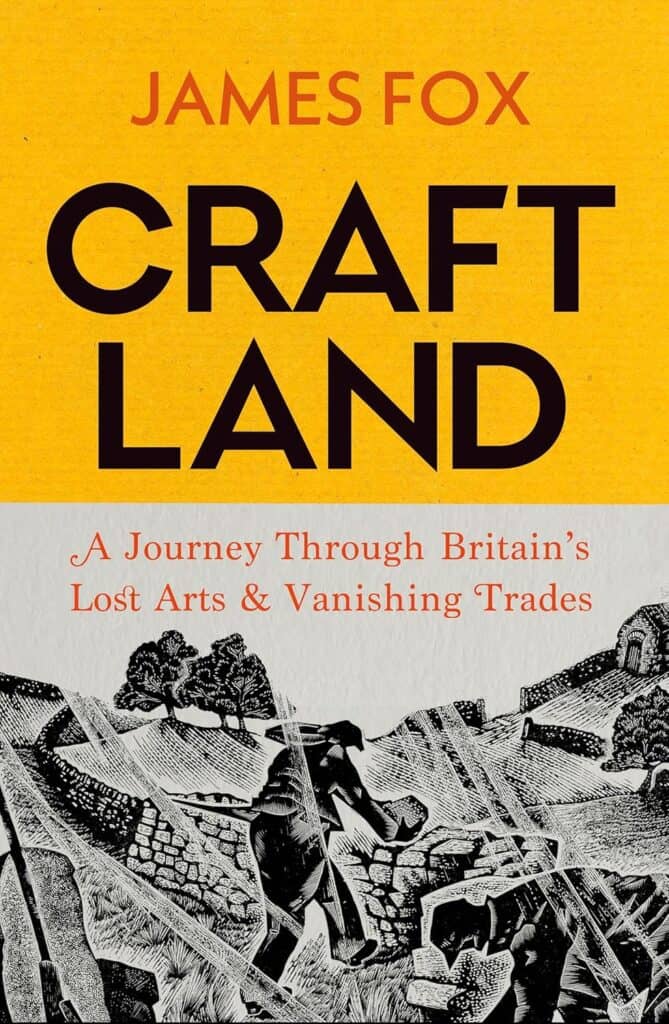A Journey Through Britain’s Lost Arts and Vanishing Trades, a celebration of mastery, with a standout exploration into watchmaking.

James Fox’s Craftland is a beautifully rendered testament — both slightly mournful and quietly hopeful — to the vanishing trades that once formed the backbone of Britain’s material soul.
Fox undertakes a measured journey across Britain, travelling from the stark grandeur of the northern highlands to the softer contours of the southern counties, seeking out the quiet custodians of ancient craftsmanship. He steps into the forges of blacksmiths and wheelwrights, pauses in the warm glow of bell foundries, and spends time with cutlers, coopers, dry-stone wallers, and watchmakers.
What emerges is a portrait of artisans who are not merely preserving tradition—they embody it. Many stand as the final link in an unbroken chain of knowledge. And as Fox observes, when these masters eventually lay down their tools, entire worlds of skill may vanish with them.
In an age of mass-production and digital disposability, Craftland is a reminder that value lies not just in the shiny or new, but in work that is slow, local, and deeply rooted. Fox makes a persuasive case that craft is not peripheral but central to how we understand the past — and perhaps how we build a more grounded future.
In ‘The Watchmaker’s Apprentice’ chapter, Fox steps into a world that, for most, exists behind closed doors, under magnification and amid near-monastic silence. Yet he approaches it not as an outsider, but with the humility of a guest entering a sacred workshop. The chapter follows an apprentice watchmaker navigating the intricate dance between patience, perfection and personal revelation — a journey every seasoned collector or enthusiast instantly recognises.

Fox captures the essence of watchmaking with admirable precision:
- the smell of oil and metal dust;
- the ritual of dial-side disassembly;
- the “click” that feels less like sound and more like affirmation;
- the moment a train of wheels springs to obedient life.
But what elevates the chapter, and indeed the entire book, is Fox’s ability to articulate the inner apprenticeship — the mental recalibration that occurs when one learns not just the skill, but the slow philosophy of the craft. He observes, with characteristic eloquence, that mastering a watch movement is as much about subduing the self as it is about overcoming mechanical challenge.
Readers will appreciate most is Fox’s deft balance of storytelling with genuine respect for horology. While the book roams across many disciplines — woodworkers, ceramicists, weavers and more — it treats each craft with the seriousness we reserve for fine watchmaking. Craft survives when one generation decides not only to learn, but to care and pass on their skills.
Fox makes clear that the future of horology, like every traditional trade, depends on apprentices willing to sit at the bench long after the glamour fades, polishing screws, refitting bridges, adjusting endshake, and learning that excellence is often invisible.


Craftland is a rare achievement — part cultural study, part love letter, part preservation effort. For watch enthusiasts, the book rewards with one of the most sensitive and accurate literary treatments of apprenticeship you’ll find outside trade manuals.
If you believe that craftsmanship is a form of storytelling…
If you believe that timepieces are more than objects…
If you believe, as we do, in celebrating the people behind the dial…
…then James Fox’s Craftland deserves a prominent place on your shelf.
I was intrigued with A Selection of (Mostly) Extinct Occupations listed at the back of the book. In particular, in relation to watch and clockmaking, were Cock-maker: a maker of bridges for balances or pallets of watches or clocks; and Verge-maker: maker of traditional escapement movements of verge watches. Others to highlight that I found interesting include, Belly man: made & assembled sound boards inside pianos; Devil: odd-job man (more often, boy in a printing office; Flirter: remover of loose bristles or brushes; and Snob: journeyman book- & shoemaker.
Also listed are The Thirty-Four Trades of Watchmaking starting with The frame-maker, who makes the frame; that is to say, the two plates, the bar and the potance, right through to The pendulum-spring wire-drawer, who draws the wire for the pendulum-springs, which is almost a distinct trade. For the other 32 trades, you can either find them in The Cyclopaedia; or Universal Dictionary of Arts, Sciences and Literature, vol. 37 (Longman, Hurst, Rees, Orme & Brown: 1819) or buy the book.
Craftland by James Fox is more than a travelogue; it’s a richly researched, deeply empathetic reflection on what it means to make things by hand, in a world that increasingly forgets why making by hand once mattered. It’s a book for anyone who cares about heritage, hard work and authenticity. It’s a thoughtful, beautifully rendered tribute to the hands and minds that make the world.
I’d suggest that you read Craftland slowly, savour its stories, and reflect on what you hold in your own hands — whether it’s a timepiece, a tool, or just a memory.
About the Author

James Fox is an academic and multi-award-winning, BAFTA-nominated broadcaster, known for his many acclaimed BBC documentaries. He is Director of Studies in History of Art at Emmanuel College, Cambridge, and Creative Director of the Hugo Burge Foundation, a charity dedicated to supporting the arts and crafts across Britain. He is also the author of the celebrated The World According to Colour: A Cultural History.
Book details
- Publisher: Bodley Head
- Publication date: 4 Sept. 2025
- Language: English
- Print length: 368 pages
- ISBN-10: 1847927866
- ISBN-13: 978-1847927866
- Item weight: 664 g
- Dimensions: 16.2 x 3.5 x 24.2 cm
For more information and to purchase the book please visit Amazon


